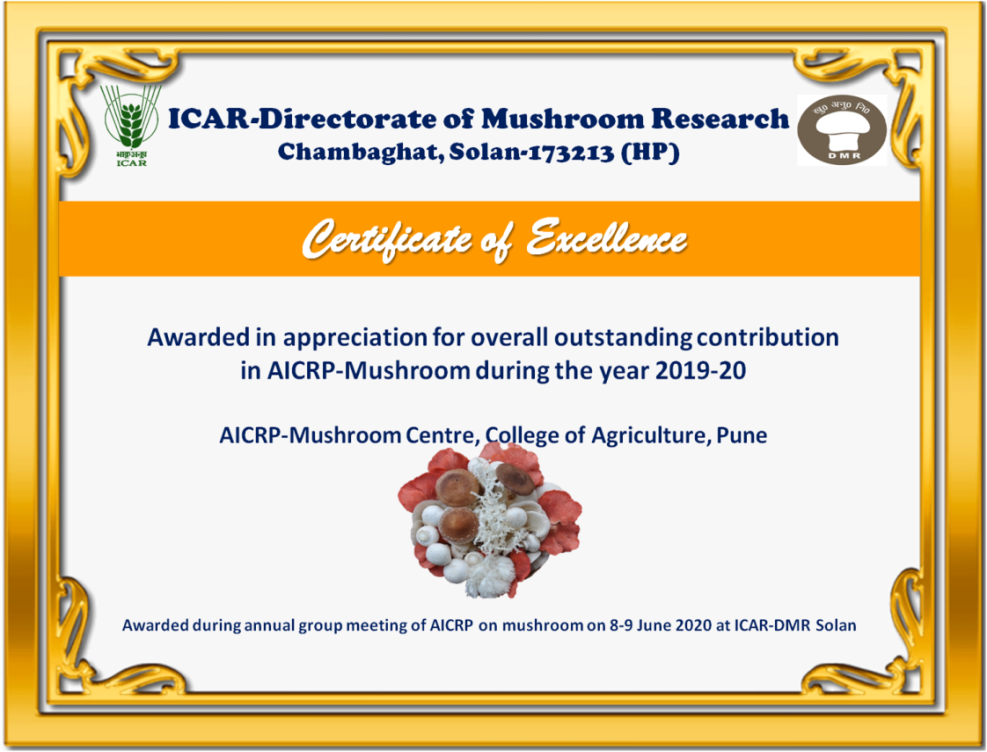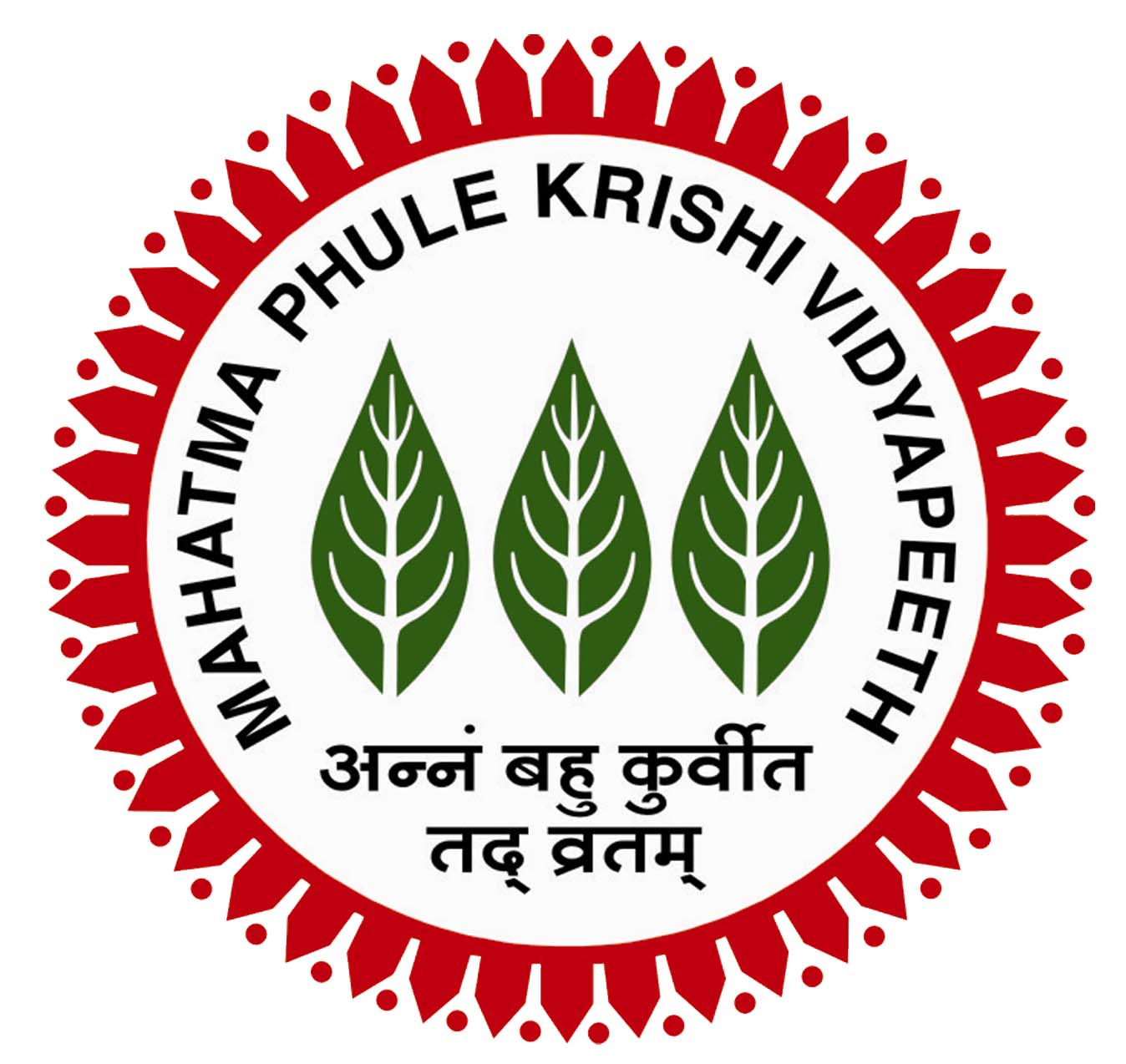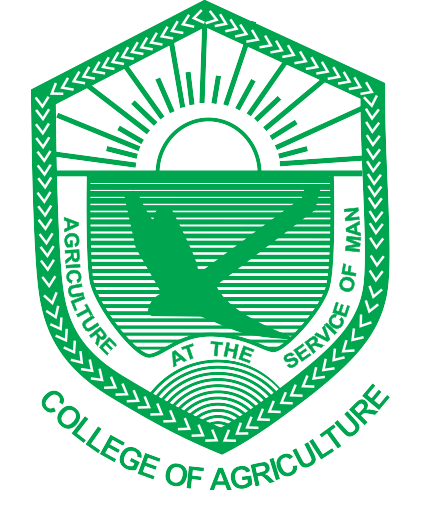Research Achivements
Recommendations
1. For chemical pasteurization of oyster mushroom substrate, the treatment of Carbendazim (50 WP) 7.5 g + Formaldehyde (38-45 LR) 125 ml per 100 lit. of water for 18 hrs is recommended.
2. For spawning in oyster mushroom 2% spawn on wet weight basis of substrate is recommended for layer method of spawning.
3. For spawning in button mushroom 0.75% spawn on wet weight basis of compost is recommended for layer method of spawning.
4. For spawning in Milky mushroom 4% spawn on wet weight basis of substrate is recommended for layer method of spawning.
5. For higher yield of button mushroom the use of coir pith + FYM (1:1) as casing material is recommended.
6. The application of Veradix-2 spray @ 0.15% at pinning stage in button is recommended for higher yield.
Technologies generated
The research experiments were conducted in AICRPM, Pune centre since 1983 on button mushroom, oyster mushroom, milky, Macrocybe, Shiitake mushrooms; germplasm collection and survey; post harvest management; survey and surveillance of insect pests and diseases of mushrooms were executed. The results of the same have been reported time to time in annual reports. The following technologies on different aspects of mushroom were developed at AICRPM, Pune Centre
• The short method of composting with wheat straw as a base material, strain P-1 and/or NCS-12 may be used in place of strain 310 for obtaining maximum yield of mushroom.
• For preparation of compost for button mushroom cultivation, following base materials are to be used in order of availability and cost effectiveness.
- Soybean + Wheat straw, 2. Wheat straw, 3. Soybean straw alone or in combination
• The strain NCB-6 of Agaricus bitorquis can be commercially cultivated by using pasteurized wheat straw compost at ambient temperature in the range of 22 to 26oC.
• For cultivation of Pleurotus sajor caju, cotton straw leaves and paddy straw are recommended as a substrate as per their availability. However, cotton stalks and leaves should be given first preference on basis of cost benefit ratio.
• A good quality and spicy mushroom pickles may be prepared successfully by using a variety of recipes developed. However, a traditional mix mushroom pickle would be accepted most preferentially. Likewise a good quality tomato mushroom sauce (50:50) could be manufactured on commercial scale as a nutritious source.
• The highest yield of button mushroom was obtained from wheat straw based compost followed by soybean straw based compost.
• The hot water treatment to the substrate resulted into significantly highest yield of 720 g /kg. dry substrate than the other two methods of pasteurization. (viz., chemical and solar pasteurization)
• Supplementation of wheat straw with 2% wheat bran + 2% rice bran was found to be significant in increasing yield of black ear mushroom.
• The acceptable white colour of button mushroom was retained upto 48 hrs. when packed in 100 guage PE bags without holes at both refrigerated and ambient temperatures. However, the acceptable white colour was retained upto 48 hrs. only when packed in 100 guage PP bags with hole and stored at refrigerated condition. In both sets performance of 100 guage PP and 100 guage PE were more or less comparable.
• Monsoon/rainy season were found most suitable for all the species of Pleurotus.
• Use of non-chemical method i.e. use of oil coated polythene sheet for control of flies in mushroom growing room was found to be most efficient.
• During the year 2017-18 and 2018-19 total 34 and 21 pure cultures of wild mushroom were deposited in the Gene Bank of Directorate of Mushroom Research, Chambaghat, Solan for accession numbers and 18 and 16 cultures, respectively obtained the DMR Accession Codes.- Overall impact of research
- All the recommendations and technologies developed are being adopted by the farmers for day to day cultivation in different mushroom farms in Maharashtra state.
- This centre has made tremendous efforts to popularize the mushroom farming in the state. As a result, locally known “Dhingri mushroom” is well popularized among the common people because of simple techniques of cultivation and low cost technology.
- More than 427 growers are engaged in the spawn production, oyster mushrooms cultivation, marketing, and processing till the date.
- The total button mushroom production in Maharashtra was 300 MT during 1992-93 and it was increased to 29,095 MT in 2021-22.
- The number of button mushroom units in 1992 was only one which increased up to 39 units in Maharashtra upto 2021-22.
- Increased awareness regarding mushroom among the farmers.
- Awards:
- The AICRP on Mushroom, Pune Centre honoured with the BEST PERFORMING CENTRE AWARD-2019-20 during Annual Workshop (Virtual), held on 8-9th June, 2020 under the Chairmanship of Hon. Secretary, DARE and DG, ICAR, N. Delhi, Dr. Trilochan Mohapatra. Other dignitaries present were Hon. DDG (HS), ICAR, N. Delhi Dr. A. K. Singh; Hon. ADG (HS), ICAR, N. Delhi, Dr. T. Janakiram and Dr. V. P. Sharma, Director, Directorate of Mushroom Research, Solan (HP).

- Dr. A.C. Jadhav, Jr. Mycologist has been appointed as a member of the Executive Council of the “Mushroom Society of India” for the period of two years from 25.02.2022 to 24.02.2024.

